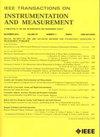Image Tracking of Fire Extinguishing Jet Drop Point Based on Improved ENet and Robust Adaptive Cubature Kalman Filtering
IF 5.6
2区 工程技术
Q1 ENGINEERING, ELECTRICAL & ELECTRONIC
IEEE Transactions on Instrumentation and Measurement
Pub Date : 2024-09-09
DOI:10.1109/TIM.2024.3451590
引用次数: 0
Abstract
Accurate image tracking of fire extinguishing jets is crucial to achieving automatic firefighting. However, inevitable noise interference occurs during image processing, adversely affecting precise tracking. In order to address this issue, a method for tracking the jet drop point (JDP) of a fire extinguishing jet is proposed based on an improved efficient neural network (ENet) and robust adaptive cubature Kalman filter (CKF). A novel JDP image state transition model is established to construct the state space equations and depict the motion state of the JDP in images. A two-stage method for recognizing JDP is proposed, which includes an improved ENet and a directional progressive curve search method to enhance the accuracy of observation. A CKF based on the Huber function is proposed to improve the adaptability and robustness of the image tracking method, which takes into account the advantages of基于改进型 ENet 和鲁棒性自适应立方卡尔曼滤波的灭火喷射落点图像跟踪技术
灭火喷射器的精确图像跟踪对于实现自动灭火至关重要。然而,图像处理过程中不可避免地会出现噪声干扰,对精确跟踪造成不利影响。为了解决这一问题,我们提出了一种基于改进型高效神经网络(ENet)和鲁棒性自适应立方卡尔曼滤波器(CKF)的灭火喷射器落点(JDP)跟踪方法。建立了新颖的 JDP 图像状态转换模型,以构建状态空间方程并描述图像中 JDP 的运动状态。提出了一种识别 JDP 的两阶段方法,其中包括一种改进的 ENet 和一种定向渐进曲线搜索方法,以提高观测精度。为提高图像跟踪方法的适应性和鲁棒性,提出了一种基于 Huber 函数的 CKF,该方法兼顾了 $L1$ 和 $L2$ 准则的优点。推导出了状态矩阵和协方差矩阵的更新公式。此外,考虑到未知噪声分布的 Sage-Husa 方法改进了跟踪方法。在实际消防平台上进行的实验表明,与传统的 CKF 相比,所提出的方法具有鲁棒性和适应性。
本文章由计算机程序翻译,如有差异,请以英文原文为准。
求助全文
约1分钟内获得全文
求助全文
来源期刊

IEEE Transactions on Instrumentation and Measurement
工程技术-工程:电子与电气
CiteScore
9.00
自引率
23.20%
发文量
1294
审稿时长
3.9 months
期刊介绍:
Papers are sought that address innovative solutions to the development and use of electrical and electronic instruments and equipment to measure, monitor and/or record physical phenomena for the purpose of advancing measurement science, methods, functionality and applications. The scope of these papers may encompass: (1) theory, methodology, and practice of measurement; (2) design, development and evaluation of instrumentation and measurement systems and components used in generating, acquiring, conditioning and processing signals; (3) analysis, representation, display, and preservation of the information obtained from a set of measurements; and (4) scientific and technical support to establishment and maintenance of technical standards in the field of Instrumentation and Measurement.
 求助内容:
求助内容: 应助结果提醒方式:
应助结果提醒方式:


